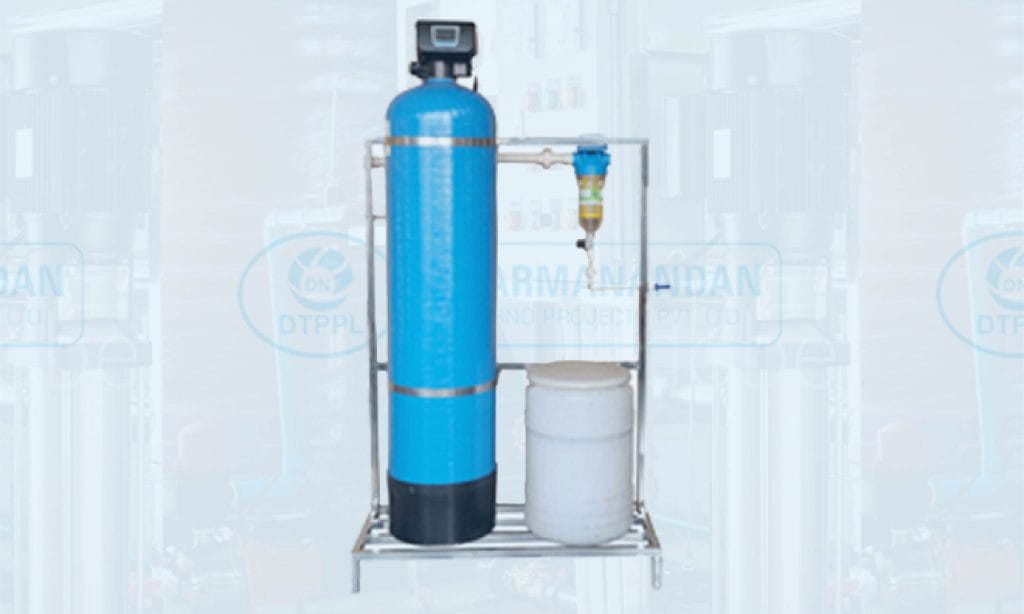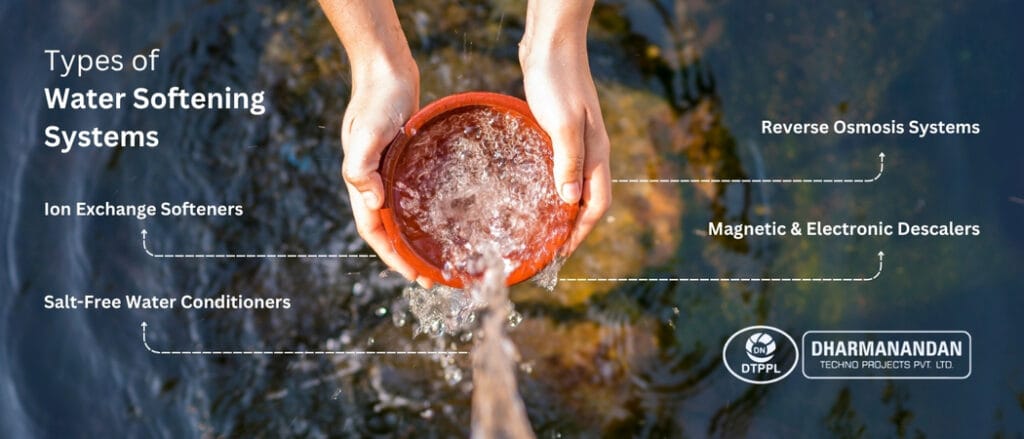
Table of Contents
All About Water Softening Plant
June 3, 2025
Water quality plays a crucial role in both residential and industrial environments. Hard water, which contains elevated levels of calcium and magnesium minerals, can cause numerous problems including scale buildup, damaged plumbing, and reduced efficiency of appliances and machinery. For entrepreneurs, startups, and medium businesses, investing in a reliable water softener or a water softening plant is essential to protect infrastructure and optimize operations.
This comprehensive guide explains everything about water softening plants — from their fundamental working principle, types, and key features to installation, maintenance, applications, and environmental considerations. Whether you are seeking a Water Softening Plant Manufacturer, Water Softener Supplier, or Water Softening Plant Exporter, understanding these factors will help you choose the right solution for your needs.

1. Introduction to Water Softening
What is Water Hardness?
Water hardness refers to the concentration of dissolved minerals such as calcium and magnesium in water. These minerals are naturally present due to water interacting with soil and rock formations. While hard water is safe to use, the high mineral content often leads to several practical challenges.
Why is Softening Water Important?
Softening water involves removing or reducing these hardness minerals. Untreated hard water causes scale buildup inside pipes and appliances, which:
- Reduces water flow and efficiency in plumbing systems.
- Increases energy consumption by heaters and boilers.
- Decreases the lifespan of appliances such as washing machines and dishwashers.
- Causes soap to be less effective, leading to increased detergent use and poor cleaning.
Effects of Hard Water on Plumbing, Appliances, and Health
- Plumbing Systems: Scale deposits narrow pipe diameter, which can lead to leaks, corrosion, and costly repairs.
- Appliances: Mineral buildup impairs the functioning of water heaters, washing machines, and coffee makers, resulting in breakdowns.
- Health: Although hard water is generally safe to drink, it can cause dry skin, irritation, and dull hair in sensitive individuals.
2. What is a Water Softening Plant?
A water softening plant is a system designed specifically to treat hard water by removing calcium, magnesium, and other hardness-causing minerals. The goal is to provide soft water suitable for domestic, commercial, or industrial applications.
Industrial vs. Domestic Water Softening Systems
- Industrial Water Softening Plants are large-scale systems built to handle significant volumes of water continuously, typically found in manufacturing, chemical processing, food and beverage industries, and power plants. These plants are usually automated and designed for high efficiency and durability.
- Domestic Water Softeners serve households and small businesses, protecting plumbing and appliances by reducing water hardness at the point of use.
Choosing a reliable water softener manufacturer or water softening plant supplier is essential for ensuring the system meets the specific water quality and capacity requirements.
3. How Does a Water Softening Plant Work?
The core technology behind most water softening plants is the ion exchange process, which efficiently removes hardness minerals.
Ion Exchange Process Explained
In the ion exchange method, hard water passes through a resin tank containing small, negatively charged resin beads. These beads attract and hold calcium and magnesium ions, which cause hardness. Simultaneously, sodium or potassium ions attached to the resin beads are released into the water, replacing the hardness ions and thus softening the water.
Common Components of a Water Softening Plant
- Resin Tank: Contains the ion exchange resin beads responsible for removing hardness ions.
- Brine Tank: Stores the salt solution used to regenerate the resin beads when they become saturated with calcium and magnesium.
- Control Valve: Manages the flow of water through the system and controls the regeneration cycle.
- Pumps and Filtration Units: Facilitate smooth water flow and remove suspended solids or sediments before softening.
Regeneration Process
Over time, resin beads become saturated with hardness minerals and lose their effectiveness. The water softening plant initiates a regeneration cycle, flushing the resin with a concentrated salt (brine) solution stored in the brine tank. This process displaces the calcium and magnesium ions from the resin beads, restoring their ability to soften water.
4. Types of Water Softening Systems
Several types of water softening systems are available, each suited for different applications and water conditions:
- Ion Exchange Softeners: The most commonly used and effective systems, utilizing resin beads and salt regeneration.
- Salt-Free Water Conditioners: Use physical or chemical processes to prevent scale without removing minerals, suitable for moderate hardness levels.
- Reverse Osmosis Systems: Filter water through semipermeable membranes, removing many impurities including hardness minerals, typically used for drinking water purification.
- Magnetic/Electronic Descalers: Employ magnetic or electric fields to alter mineral crystal formation, reducing scale buildup; effectiveness varies depending on water chemistry.

5. Components of a Water Softening Plant
A typical water softening plant consists of:
- Resin Beads: Made of polystyrene sulfonate, these beads are responsible for ion exchange.
- Brine Tank: Holds the salt required for regenerating resin beads. High-quality salt enhances regeneration efficiency.
- Valves and Controls: Automated valves regulate water flow, regeneration timing, and system performance.
- Pumps and Filtration Units: Support the movement of water and remove particulates to protect the resin and downstream equipment.
6. Key Features of Water Softening Plants
Modern water softening plants possess several features designed to maximize efficiency and ease of use:
- Vertical Vessel Design equipped with automatic multiport valves simplifies operation and maintenance.
- Effective Scale Reduction helps save on detergent usage and reduces water heating costs by preventing mineral buildup.
- Improved Process Efficiency by safeguarding equipment and machinery from scale-related wear and tear.
- Reduced Maintenance and Operating Costs due to lower chemical consumption and minimized downtime.
- Energy and Water Savings through more efficient water heating and less frequent cleaning cycles.
7. Water Softening Plant Design and Capacity
The design of a water softening plant must be tailored to meet the specific water demand and hardness levels:
- Determining Plant Size and Capacity: Calculate based on daily water consumption and degree of hardness.
- Flow Rate Considerations: Ensure the plant can handle peak water demand without compromising softening performance.
- Industrial vs. Residential Sizing: Industrial plants require higher capacity and automation, while residential units focus on smaller volumes and ease of use.
Working with an experienced water softening plant manufacturer guarantees a design optimized for your application.
8. Applications of Water Softening Plants in Industries
Water softening plants are critical in numerous sectors:
- Pharmaceutical Industries: Require soft water to maintain purity and avoid contamination.
- Water Jet Looms: In textile manufacturing, soft water prevents scale that can damage equipment.
- Power Generation: Boilers and cooling systems rely on soft water to prevent scale and corrosion.
- Automobile Manufacturing: Soft water protects sensitive processes and equipment.
- Chemical Industries: Soft water safeguards reactors and piping from mineral deposits.
- Dairy Processing: Ensures hygiene and operational efficiency.
- Processing Industries: Protects various manufacturing equipment from scaling.
- Institutional Sectors: Hospitals, schools, and commercial buildings benefit from improved water quality.

9. Water Softener Installation and Commissioning
Proper installation is key to system effectiveness:
- Site Requirements: Sufficient space, proper drainage, and ventilation are essential.
- Plumbing and Electrical Considerations: Must meet safety standards and be compatible with existing infrastructure.
- Initial Testing and Startup: Confirm water hardness reduction, flow rates, and regeneration cycles are functioning properly.
Many water softening plant suppliers offer turnkey installation services to simplify this process.
10. Water Softening Plant Operation and Maintenance
To ensure optimal performance:
- Conduct daily and monthly checks on salt levels, water quality, and system operations.
- Refill the brine tank with salt as required, using quality salt for effective regeneration.
- Periodically clean or replace resin beads to maintain ion exchange efficiency.
- Monitor and troubleshoot common issues such as pressure drops, valve malfunctions, or taste changes.
Regular maintenance from a reputable water softener supplier extends system life and reliability.
11. Water Softening Plant Cost Analysis
Investment in a water softening plant includes:
- Initial Costs: Equipment purchase, installation, and commissioning.
- Operating Expenses: Salt, electricity, and routine maintenance.
- Savings: Reduced appliance repair costs, energy savings, lower detergent use, and fewer plumbing issues justify the investment over time.
Engaging a knowledgeable water softener manufacturer helps select a cost-effective system tailored to your budget.
12. Benefits of Using a Water Softening Plant
- Extended Lifespan of plumbing and appliances due to scale prevention.
- Improved Water Quality that enhances taste, cleaning efficiency, and skin feel.
- Cost Savings from reduced energy consumption, maintenance, and chemical use.
- Operational Efficiency in industrial processes protected from mineral scaling.
13. Environmental and Health Considerations
- Proper management of salt discharge and wastewater is essential to minimize environmental impact.
- Eco-friendly softening alternatives such as salt-free conditioners are gaining popularity.
- Monitoring sodium levels in softened water is important, especially for individuals on sodium-restricted diets.
Conclusion
Choosing the right water softener or water softening plant from a reputable manufacturer, supplier, or exporter is vital for startups, entrepreneurs, and businesses facing hard water challenges. A well-designed and maintained water softening plant improves water quality, protects assets, and reduces operational costs.
For tailored advice and reliable products, partnering with experienced water softening plant manufacturers and suppliers ensures you receive a solution best suited to your unique requirements.

Director – Global Marketing and Sales
Mr. Bhavesh from Dharmanandan Techno Projects Pvt. Ltd. has played a pivotal role in elevating the DTPPL brand to the global stage, leveraging his exceptional expertise in marketing and communications. He is committed to helping clients achieve significant growth while strengthening their own brands. Dharmanandan Techno Projects Pvt. Ltd. is a leading manufacturer and supplier of water purification systems and turnkey solutions for mineral water plants. With years of experience in designing and delivering high-quality water treatment solutions, the company provides end-to-end services, including system design, installation, maintenance, and ongoing support. Specializing in scalable and customizable water plants, DTPPL has successfully served industries worldwide, ensuring clean and safe drinking water across diverse applications.
